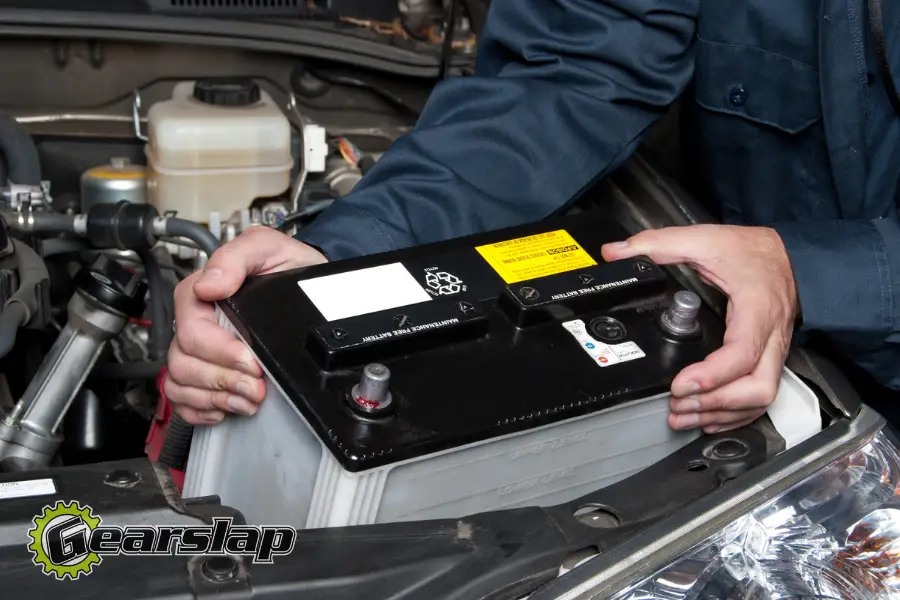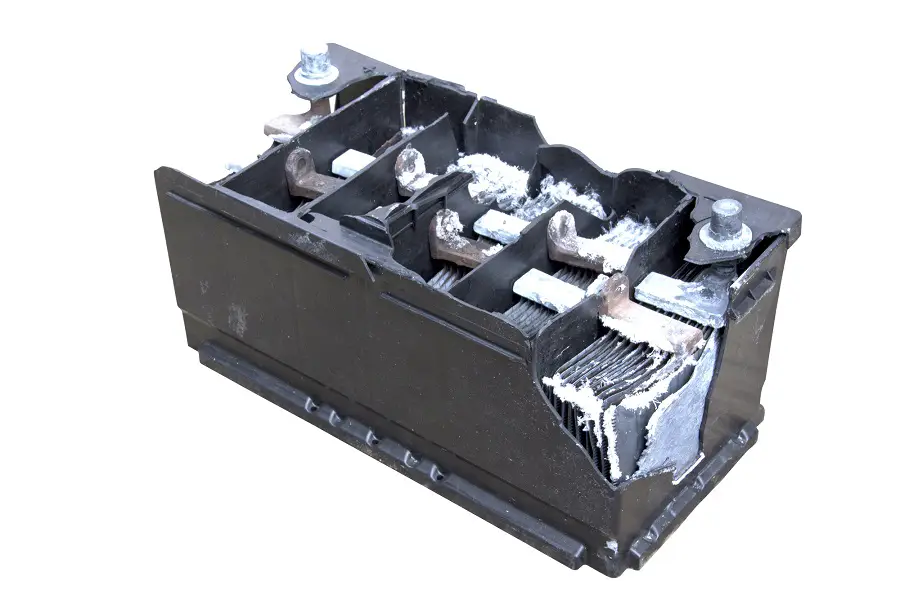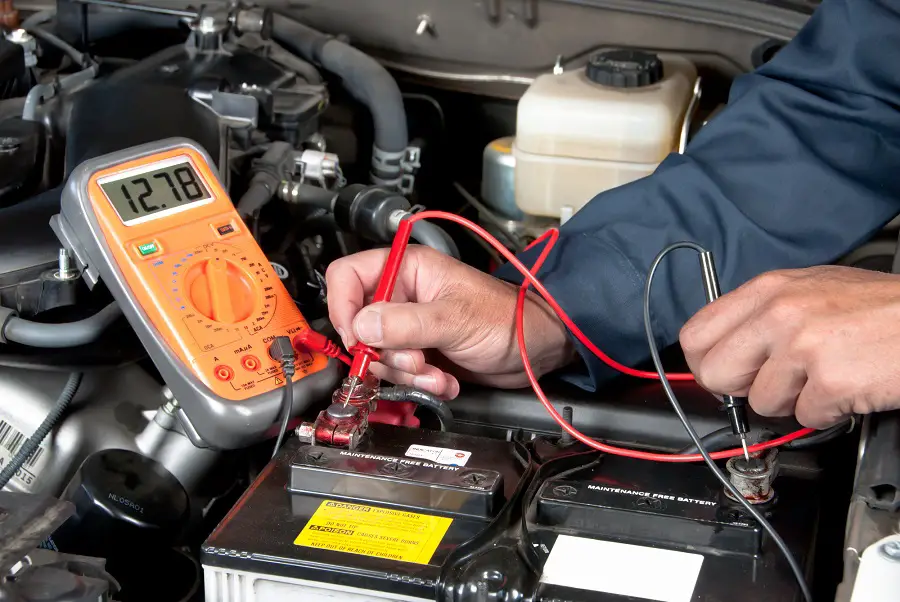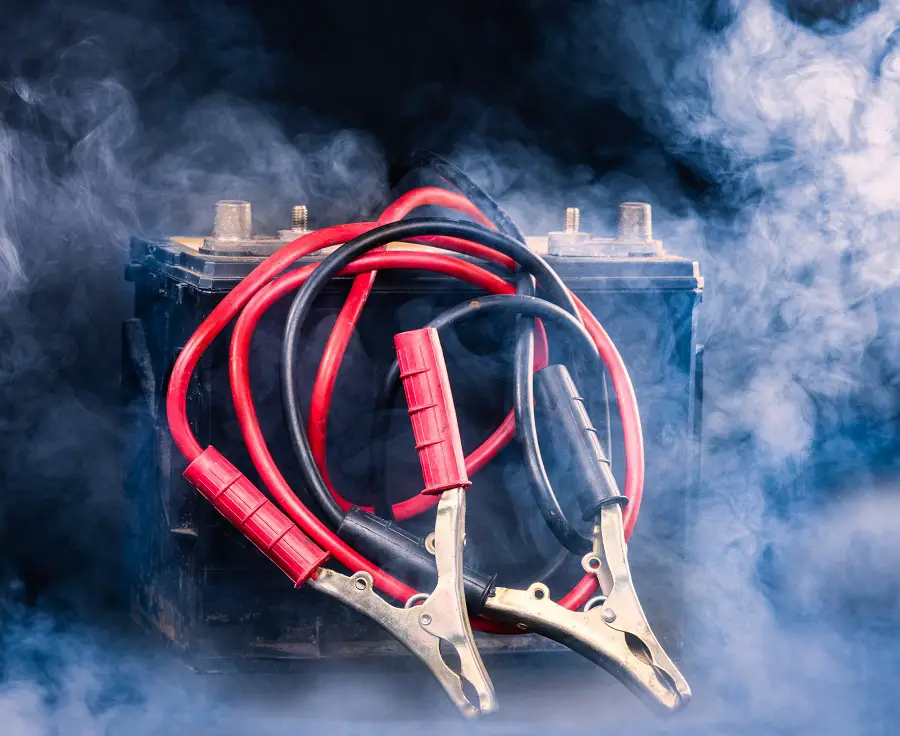Folks rely on their cars to get from place to place. The average person will spend 48 minutes a day inside their vehicle, meaning that most people spend a lot of their day in the car.
Given how much we rely on personal vehicles, annoyances involving the car battery can make a bad day worse. So, let’s take a look at what you can be on the lookout for to solve issues around a dead car battery and how to prevent one from sneaking up on you in the first place.

Steps to Determine if Your Car Battery Is Completely Dead
If your car is having trouble starting, you’ll want to inspect the battery first. The battery can be one of the reasons why your car won’t start but may not be the only source of start-up woes in the vehicle.
First, check out the lights inside your car on the dashboard. When you place the keys into the ignition, you should see some lights on the dash. Warning lights, seat belt reminders, and backlights for the speedometer and odometer should come on even if the engine isn’t running. You could have a dead battery if these lights don’t come on.
Another way you can determine if the battery may be faulty is to look at the battery contacts under the hood. Open your hood and visually inspect the contacts to look for white residue. This residue is corrosion, which is a sign that the battery is damaged or defective in some way and needs replacing.
Finally, look at the date on the side or top of the battery. Most batteries have a manufacturing date printed or molded onto the exterior casing. Some auto shops and mechanics write this date on the battery.
Since car batteries should last two to five years, this manufacturing date will tell you how long ago the battery was new, giving you an idea of when it needs replacing.
Signs That Your Car Battery Is Dead or Dying
Preventing a problem is always better than fixing it later, and this is true for your car battery. Battery issues can sneak up sometimes, and you can reduce the chances of it happening to you by looking out for some of these signs your battery is on its last leg:
The Engine Turns, but the Car Won’t Start
If you turn the key and hear the engine struggling to kick in, that’s a sign that your battery might be on its way out. Engines need a lot of power to start. Since this power comes from the battery, a lack of turnover means the battery is not bringing enough electricity to start the motor.
There Is No Engine Crank, Start-Up, or Lights
If there are no lights or the engine doesn’t turn over, your car battery is the likely culprit. This issue is an advanced version of the last problem. Sometimes, you can fiddle with things to get the battery to kick on, which may prevent becoming stranded.

The Car Goes Between Starting and Not Starting
Car batteries should deliver the power you need with no hiccups. If your car sputters or struggles to turn over, your battery might not be bringing power to the engine. This trouble is common for a battery near the end of its life. Since the battery can barely create the electric charge needed to fire up the engine, you will want to replace the battery soon.
The Car Cold Cranks Often
Every car battery has a rating for something called cold-cranking amps. This is an electrical measurement of the electric charge the battery puts out to start the engine.
If you have to tap the gas, turn the key a few times, or otherwise coax the car to start up, that is a sign that the battery will run out soon. The battery needs to reach this cold-cranking amperage reliably, so a battery that struggles to do this is a battery at the end of its life.
The Car Battery Has Been Jumped a Few Times Already
If your car battery takes a jump to get a charge, the electrical capacity of your battery is reduced. A car battery that needs jumping to get started can damage your car’s alternator.
The alternator turns mechanical power from the car’s engine into electricity to power the car’s computer components, so damaging this part in addition to the battery can be expensive to fix.

FAQ
Here are some common questions out there about dead car batteries and charging them:
What Happens if Your Battery Is Completely Dead?
If your battery is completely dead, your best option is to try and jump the battery. If you are able to get the engine running, head over to your auto parts store or dealership to get the battery replaced. Don’t stop the car until you reach a place to swap batteries since your battery could lose this jumpstart when you turn the ignition off.
Can a Battery Be Too Dead to Charge?
A battery can be too dead to charge if the internals of the battery won’t hold a charge anymore. Car batteries rely on acid to hold and transfer electric charge. If the acid inside the car battery is gone or worn out, it will no longer hold or transfer a charge.
Will My Car Battery Come Back to Life?
While you can charge or jump car batteries to bring them back to life, these solutions are temporary. If you find you rely on these solutions more and more to keep your battery going, that is a clear sign that it’s time to replace the battery.
What Should I Check Next if My Car Battery Is Okay?
Once you rule out your battery as the source of problems, the next two parts to check out are the alternator and the car starter. Both of these parts work with the battery to bring life to the engine when you turn the ignition on.





